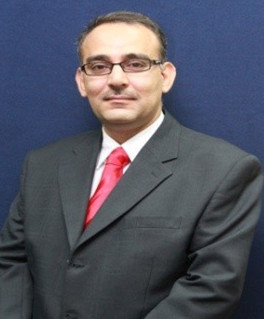Abstract—For decades, brackish and seawater desalination has been a solution for the shortage of fresh water, mostly in arid areas. However, desalination is an energy intensive technology and its energy cost stays very high even in countries producing fossil fuels, as in the case of Kuwait. The consumption of water per capita is very high in Kuwait, at 500 liters per person per day, due to the long summer season with high temperature that easily exceeds 45C. Interest in generating fresh water in Kuwait using a renewable energy has been grown in the last few years. In this work, a comparative study in terms of evaluating electric energy potential that could be generated to operate a Reverse Osmosis (RO) desalination unit is presented. This energy will then feed a concrete factory in Al-Taweel station located South of Kuwait city. In order to perform the required calculations, a computer program will be developed. The wind data will be used to predict the potential wind energy at different heights. The monthly average wind speed for the considered site is approximately 5 m/s at a standard height of 10 m. The power-law method will be used to extrapolate the wind data at different heights. The nominal production potential of the RO system will then be estimated.
Index Terms—Reverse osmosis, wind energy, fossil fuels, wind turbine.
A. A. Alsairafi and M. H. Al-Shehaima are with the Department of Mechanical Engineering, College of Engineering and Petroleum, Kuwait University, P.O. Box 5969, Safat 13060, Kuwait (e-mail: ammar.alsairafi@ku.edu.kw, m_alshehaima@hotmail.com).
[PDF]
Cite:A. A. Alsairafi and M. H. Al-Shehaima, "Wind Driven Reverse Osmosis Desalination for Concrete Factory Application in Kuwait," Journal of Clean Energy Technologies vol. 4, no. 2, pp. 144-147, 2016.


